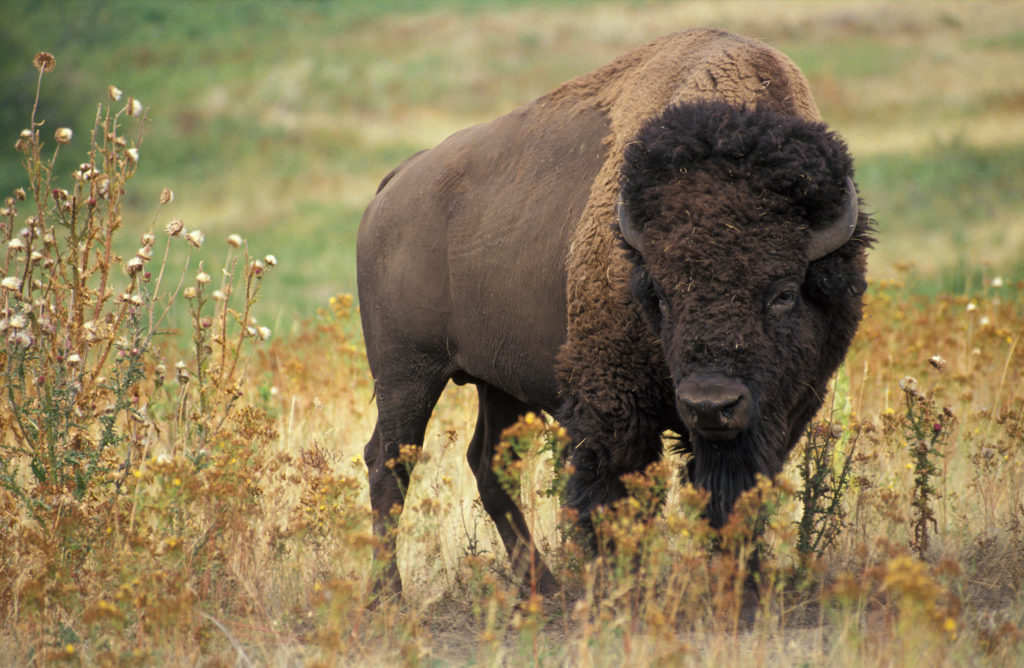The Buffalo Commons

Back in the 1980s, Frank and Deborah Popper came up with the idea of the Buffalo Commons. Basically, their idea was that the western Plains are almost completely depopulated and ecologically degraded. Why not connect up large parts of the Plains and turn bison loose upon them to live at least to some extent how they did before the arrival of whites? Their argument was that it made sense both ecologically and economically. After all, seeing large wildlife herds is a great way to get tourism and there really is not meaningful economic activity in much of western Nebraska or North Dakota. Of course, locals and the cattle industry saw the Poppers as pure evil, driving the last off them off their land. Even though it may not make much economic sense to run cattle on your land, if you are the last cowboy, you still want to be the one living that life. So it’s not too surprising.
Well, the idea has had legs and occasionally comes up still. There are nascent efforts to try to do something like this and here is a profile on struggling attempts to create the American Prairie Reserve.
The first 16 bison were brought to American Prairie in 2005, and their numbers have grown to 774. The reserve has set a goal to settle 6,000 bison on 500,000 contiguous acres, Mr. Heidebrink said. The hardest part of the task, though, has been building up enough land.
Someday, the bison on reservations, American Prairie and nearby wildlife refuges in the United States and Canada, may become one vast herd, roaming across about 3 million acres. Native American communities in Montana, including the Fort Belknap Reservation and Blackfeet Nation, already have herds of their own.
A full-blown prairie ecosystem is still decades away, and it won’t be cheap: Dr. Freese, who is writing a book about the return of wildlife to the plains, estimates it is likely to cost several hundred million dollars.
Recent studies have demonstrated some of the important ecological effects that bison have on grasslands. A long-term comparative study of bison and cattle on tallgrass prairie in Kansas, showed that over about 30 years on land grazed by bison, the richness of native plant species doubled compared with places where cattle grazed, and the presence of bison made the prairie ecosystem more resilient to drought.
…..
There are other reasons the bison herd here today is not yet the wild, free-roaming population American Prairie envisions. In Montana, bison are considered livestock, not wildlife, which means they are not free to roam. Some state officials are fiercely opposed to bison being designated as wildlife, like elk and deer, because, if they roamed freely on federal land and elsewhere, they would compete with cattle for food.
Critical natural elements of a wild prairie, such as fires, are absent as well, meaning bison no longer follow ancient rhythms of migrating to find new grass that grows in the wake of a wildfire or rainstorm. However, those who began this project still believe a wild herd will eventually roam the prairie again.
Until American Prairie can expand its herd, the group is donating surplus bison to neighboring Indian reservations. On a recent cold, sunny morning, members of the Chippewa Cree tribe, which only recently received federal recognition, picked up five young bison.
“There are six bison herds all within a hundred miles of each other,” said Dr. Freese. “My vision long term is to develop a comanagement system, where bison roam freely across that whole landscape. You could have a herd of 50,000 bison.”
I think this makes a ton of sense. It also happens to cut against a lot of work culture among the white people who live out there, which is not a lot of people really, but they are loud and have senators.


